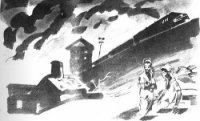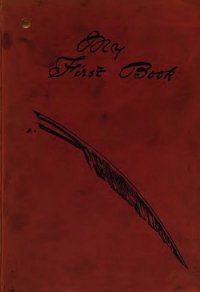Operation Nemesis: The Assassination Plot that Avenged the Armenian Genocide - Bogosian Eric (мир книг .txt) 📗
Tehlirian cautiously widened his circle of young Armenian friends through the oblivious Eftian. As he met more and more young Armenians in Berlin, he was dismayed to find that most were not incapacitated with mourning. In his memoirs, he notes with amazement that these Armenians had, after only a short five years, begun to move on and live full and successful lives in Germany. To be sure, most of them had not been as engaged with the violence as Tehlirian had. Some had simply packed up and left Turkey as trouble loomed. Some were from Constantinople, where the deportations had not been so thorough. All were fluent in German. All had jobs. And like young people everywhere, they socialized as often as they could.
One such occasion was a birthday party for Eftian. Upon arriving, Tehlirian found himself wrapped in a bear hug by a former muleteer named Karekin. Karekin was from Mush, a town west of Van that had been particularly hard hit. Over a hundred thousand Armenians had died there when the Special Organization in concert with Kurdish Hamidiye emptied the town and the surrounding villages of Christians. Tens of thousands were deported, but just as many were killed on the spot. In 1915 Mush had been hell on earth.
In contrast to Tehlirian’s persistent and indelible grief, Karekin seemed to revel in his status as a survivor. In Tehlirian’s words, for Karekin, “the days of misfortune appeared as a desirable past.”20 The muleteer of the desert, having established himself as a manual laborer in Berlin, replaced mournfulness with a bittersweet nostalgia for the harsh life he had endured in Anatolia.
Happy to see a familiar face, Karekin peppered Tehlirian with questions about old friends and allies. Soon everyone at the party was trading stories about what had happened to their respective families. Karekin launched into a long story about how all three of his sisters had been kidnapped before reaching the Euphrates. He added that the smaller children had hidden in the fields with his mother, but the dry grass was set on fire. Snatched up by the gendarmes as they tried to run, the children were corralled into nearby stables, where they were forced to accept Islam or die.
Tehlirian begged Karekin to stop. Karekin’s lined face broke into a wincing grin. “Why, did I strike a nerve?” Tehlirian replied that he himself was overflowing with stories and had no room in his heart for more. Levon Eftian, in an attempt to break the tension between the two men and redirect the conversation, cursed Talat’s name. Others repeated the oath. But this was exactly the sort of ineffectual demonstration that Tehlirian hated: people histrionically ranting against the “bloody Turks” but doing nothing, taking no action. Bottling up emotions he could not express, Tehlirian felt a black mood building. “It was our own fault,” he muttered. “We are the guilty ones and not Talat, for having trusted him after the Adana massacre.”21 He glowered at Karekin. The muleteer struck his table with his fist and shouted, “What is this person who calls himself Armenian, he is defending Talat!” and stormed out of the party.
The encounter left Tehlirian upset and at loose ends. Memories of his family, and of their anguish, flooded into him. A deep anxiety seized him. What if he slipped up while in the company of these silly people and inadvertently exposed the plot to hunt down Talat? But what choice did he have? He had to stay the course; he had to continue to interact with these impotent complainers, pretending to be one of them. He would try to avoid debating the pros and cons of the tragedy, but these conversations were inevitable. These happy Armenians were, in Tehlirian’s view, consciously shirking their duty to the dead by living their lives as if nothing had happened. Something had happened. And someone must answer for it. Someday they would see what people with a conscience could do.
One afternoon Eftian and Apelian arrived at Tehlirian’s room unannounced. “You are coming with us to take dancing lessons.”22 Tehlirian didn’t understand. Learn to dance? He knew how to dance! Apelian slipped an arm around his waist and whirled Tehlirian around his room. “Like this! The way they dance here!”
Tehlirian, immersed in his sunless world where dancing was unthinkable, replied, “Are you crazy? Is this a time to dance?”
Apelian didn’t hesitate. “Of course! Spring is here. It is the time for dance and love! And you will improve your German as well. You’ve been here for over a month and you can’t speak two words!”
“I’m not a dancer,” Tehlirian protested simply.
Levon chimed in, “You have no choice. We’ve already spent the money!”
At the dancehall, the robust and glowing young students were greeted by the dance instructor, Professor Friedrich. The Victrola was cranked, the turntable was set spinning, Herr Professor blew into a tiny whistle, and everyone launched into a whirling polka. Tehlirian was lost. He knew only one sort of dance, the traditional circle dance of Anatolian weddings and baptisms. The strange set of movements spinning all around him only thrust him deeper into his misery. He began to fantasize about the way they used to dance back in Erzincan, in the days when everyone was happy, when everyone… The scent of blood flooded his senses, his knees grew weak, and Tehlirian collapsed onto the dance floor.
The incident saved young Soghomon from dance instruction that day. It also served to remind him that the seizures were not abating. What if at the moment of truth he was not able to execute the order? What if all this effort was leading up to a colossal failure? The “sickness” was not as serious as it had been in Yerevan, but it was active nonetheless. The next day, when he attended his language lesson with Lola, he couldn’t focus. His “Fraulein Lehrer” would testify six months later that he was “preoccupied.”
In the first days of 1921, Tehlirian, despite his erratic health, resumed his surveillance. The work was both tedious and agonizing as the winter weather grew bitter. Eyes drooping with fatigue while standing at his post one day, Tehlirian realized he was watching the approach of two familiar-looking men. It was Drs. Shakir and Nazim, the notorious leaders of the Special Organization. They entered 47 Uhlandstrasse. Fifteen minutes later, Shakir exited the building and Tehlirian followed him, leaving a man behind to cover Nazim.
Fighting the Berlin cold, Tehlirian trailed Shakir block after block while the former head of the Special Organization maintained a feverish pace—“like fire,” in Tehlirian’s words. Exiting the neighborhood, they rounded the sprawling Tiergarten park, which covered the center of old Berlin. Hurrying along for over half an hour, Tehlirian wondered why Shakir had not taken a car. Did he suspect that he was being followed?
Shakir made his way from one end of the Tiergarten to the other, eventually arriving at the old British embassy on Wilhelmstrasse. The former SO leader entered the building. Lacking the credentials to follow him in, Tehlirian waited outside, stamping his feet, blowing on his frozen hands, his head aching from fatigue. Suddenly the doctor appeared between the columns of the front portico and raced down the steps. He immediately resumed his rapid pace. Tehlirian followed for a few steps then felt the peculiar sensations that always preceded a fainting spell. His slowed to a standstill, his eyesight dimmed. Shakir slipped into the crowd as Tehlirian collapsed onto the pavement. He awoke to find himself surrounded by curious onlookers peering down at him. Tehlirian rose weakly to his feet, only to find that his man was gone. But perhaps a new piece of the puzzle had been discovered. Why was Shakir visiting the British? Brushing himself off, Tehlirian pushed through the onlookers and staggered back to his room. The next day, Vaza took him to the doctor.23




